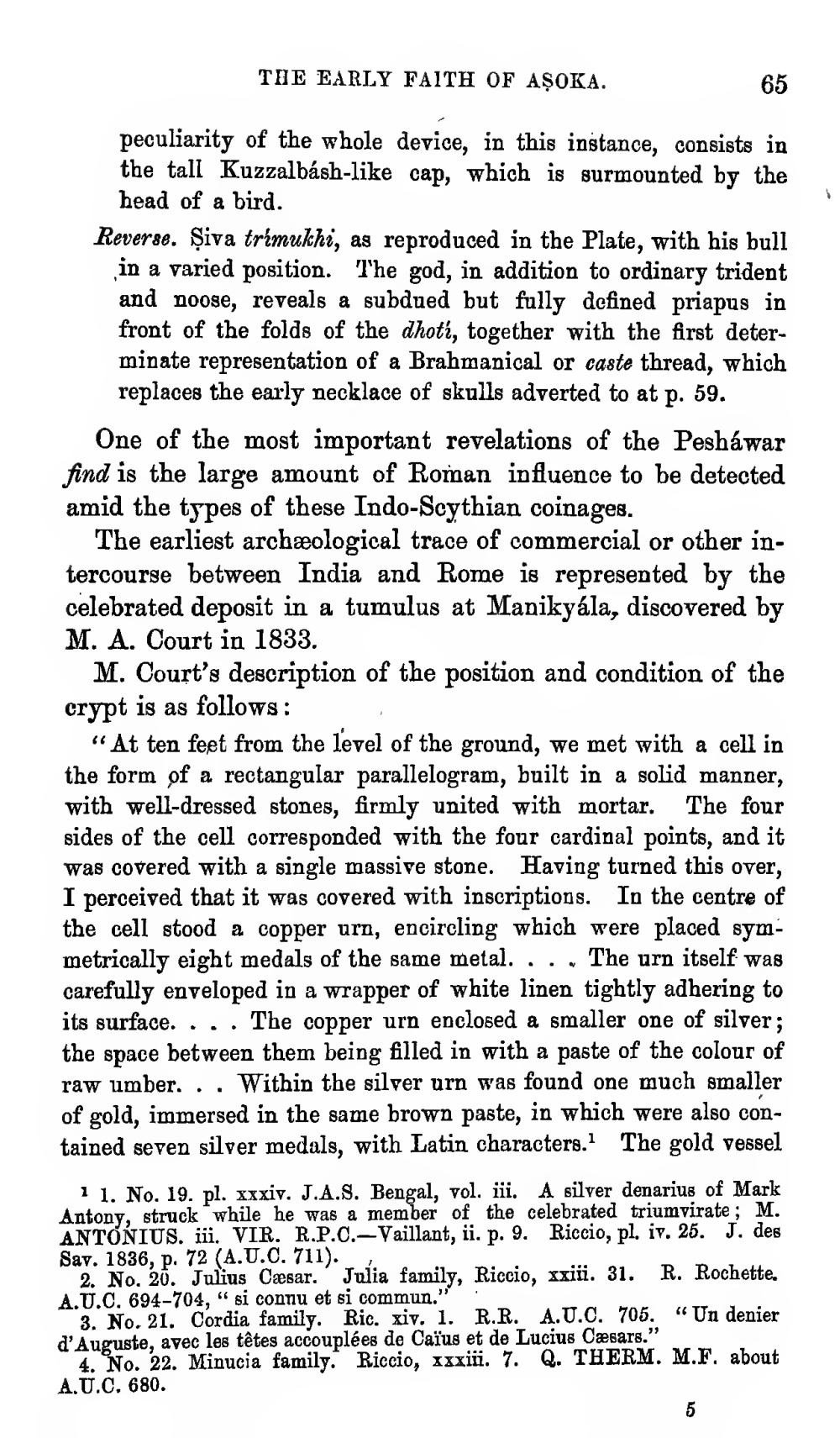________________
THE EARLY FAITH OF AŞOKA.
65
peculiarity of the whole device, in this instance, consists in the tall Kuzzalbásh-like cap, which is surmounted by the
head of a bird. Reverse. Șiva trimukhi, as reproduced in the Plate, with his bull
in a varied position. The god, in addition to ordinary trident and noose, reveals a subdued but fully defined priapus in front of the folds of the dhoti, together with the first determinate representation of a Brahmanical or caste thread, which
replaces the early necklace of skulls adverted to at p. 59. One of the most important revelations of the Peshawar find is the large amount of Roman influence to be detected amid the types of these Indo-Scythian coinages.
The earliest archæological trace of commercial or other intercourse between India and Rome is represented by the celebrated deposit in a tumulus at Manikyála, discovered by M. A. Court in 1833.
M. Court's description of the position and condition of the crypt is as follows:
“At ten feet from the level of the ground, we met with a cell in the form of a rectangular parallelogram, built in a solid manner, with well-dressed stones, firmly united with mortar. The four sides of the cell corresponded with the four cardinal points, and it was covered with a single massive stone. Having turned this over, I perceived that it was covered with inscriptions. In the centre of the cell stood a copper urn, encircling which were placed symmetrically eight medals of the same metal. ... The urn itself was carefully enveloped in a wrapper of white linen tightly adhering to its surface. ... The copper urn enclosed a smaller one of silver; the space between them being filled in with a paste of the colour of raw umber. . . Within the silver urn was found one much smaller of gold, immersed in the same brown paste, in which were also contained seven silver medals, with Latin characters. The gold vessel
11. No. 19. pl. xxxiv. J.A.S. Bengal, vol. iii. A silver denarius of Mark Antony, struck while he was a member of the celebrated triumvirate ; M. ANTONIUS. iii. VIR. R.P.C.-Vaillant, ii. p. 9. Riccio, pl. iv. 25. J. des Sav. 1836, p. 72 (A.U.C. 711).
2. No. 20. Julius Cæsar. Julia family, Riccio, xxiü. 31. R. Rochette. A.U.C. 694-704,"si connu et si commun."
3. No. 21. Cordia family. Ric. xiv. 1. R.R. A.U.C. 705. “Un denier d'Auguste, avec les têtes accouplées de Caïus et de Lucius Cæsars."
4. No. 22. Minucia family. Riccio, xxxii. 7. Q. THERM. M.F. about A.U.C. 680.




